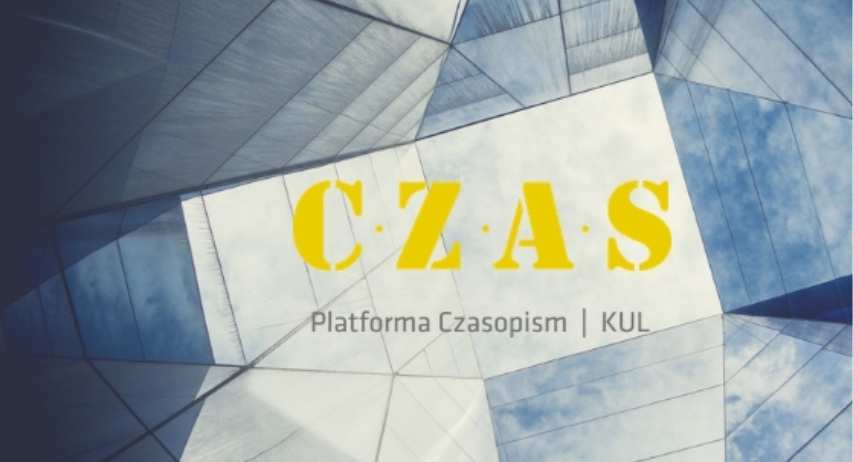Al Mahdi Case at International Criminal Court: landmark decision or a missed opportunity?
Abstract
The case of Al Mahdi in the International Criminal Court is a landmark case, though being a controversial one. On 27th of September 2016 the ICC for the first time issued a judgement concerning the war crime of intentionally directing attacks against buildings dedicated to religion, education, art, science or historic monuments, provided they are not military objectives. The case of Al Mahdi is a starting point for the historical analysis of the notion of culture in the international law – from the cultural property, protected in the times of armed conflicts, through cultural heritage in its tangible form, to intangible heritage. By understanding culture as dynamic and pivotal for local societies, as well as for international community, cultural heritage is now being perceived as an important part of human dignity and thus human rights.
Keywords:
International Criminal Court, UNESCO, Timbuktu, cultural heritage, human rights, cultural cleansingReferences
Al Hassan Ag Abdoul Aziz Ag Mohamed Ag Mahmoud Makes First Appearance Before the ICC, https://www.icc-cpi.int/Pages/item.aspx?name=pr1377 [dostęp: 22.05.2018 r.].
Bugnion F., The Origins and Development of the Legal Protection of Cultural Property in the Event of Armed Conflict. 50th Anniversary of the 1954 Hague Convention for the Protection of Cultural Property in the Event of Armed Conflict, International Committee of the Red Cross, https://www.icrc.org/en/doc/resources/documents/
article/other/65shtj.htm [dostęp: 20.05.2018 r.].
Daniels B.I., Is the Destruction of Cultural Property a War Crime?, „Apollo. The International Art Magazine” 28.11.2016, https://www.apollo-magazine.com/is-the-destruction-of-cultural-property-a-war-crime [dostęp: 22.05.2018 r.].
Fincham D., Intentional Destruction and Spoliation of Cultural Heritage under International Criminal Law, „U.C. Davis Journal of International Law & Policy” 2017, https://jilp.law.ucdavis.edu/issues/volume-23-2/jilp-23-2-Fincham.pdf [dostęp: 22.05.2018 r.].
Francioni F., F. Lenzerini, The 1972 World Heritage Convention. A Commentary, Oxford 2008.
Gerstenblith P., The Destruction of Cultural Heritage: A Crime Against Property or a Crime Against People?, „The John Marshall Review of Intellectual Property Law” 2016.
Henckaerts J.M., New Rules for the Protection of Cultural Property in Armed Conflict, „International Review of the Red Cross” 1999, nr 835.
Hodder I., Cultural Heritage Rights: From Ownership and Descent to Justice and Well-being, „Anthropological Quarterly” 2010, t. 83, nr 4.
Jones J., Destroying Priceless Art is Vile and Offensive – But it is Not a War Crime, “The Guardian” 22.08.2016, https://www.theguardian.com/artanddesign/ jonathanjonesblog/2016/aug/22/ahmad-al-mahdi-war-crimes-the-hague-destroying-mausoleums-timbuktu [dostęp: 22.05.2018 r.].
Kubiak K., Konflikt w Mali. Rebelia Tuaregów, islamiści i międzynarodowa interwencja, „Przegląd Politologiczny” 2014, nr 1.
Lixinski L., Intangible Cultural Heritage in International Law, Oxford 2013.
Lostal M., The Misplaced Emphasis on the Intangible Dimension of Cultural Heritage in the Al Mahdi Case at ICC, „Inter Gentes – The McGill Journal of International Law & Legal Pluralism” 2017, t. 1, nr 2.
Matusitz J., Symbolism in Terrorism. Motivation, Communication, and Behavior, Lanham 2015.
Mikos-Skuza E., K. Sałaciński (red.), Ochrona dziedzictwa kultury w czasie konfliktów zbrojnych w świetle prawa międzynarodowego i krajowego. 60-lecie konwencji haskiej i 15-lecie jej Protokołu II, Warszawa 2015.
Nahlik S.E., Grabież dzieł sztuki. Rodowód zbrodni międzynarodowej, Wrocław 1958.
Nieć H., Ojczyzna dzieła sztuki. Międzynarodowa ochrona integralności narodowej spuścizny kulturalnej, Kraków 1980.
Przyborowska-Klimczak A., Międzynarodowa Ochrona Niematerialnego DziedzictwaKulturalnego, „Problemy Współczesnego Prawa Międzynarodowego, Europejskiego i Porównawczego” 2005, t. 3.
Przyborowska-Klimczak A., Rozwój ochrony dziedzictwa kulturalnego w prawie międzynarodowym na przełomie XX i XXI wieku, Lublin 2011.
Stryjkowska S., Problematyka ochrony dziedzictwa kulturowego w działalności międzynarodowych trybunałów karnych, „Przegląd Prawniczy Uniwersytetu im. Adama Mickiewicza” 2016, t. 6.
United Nations Economic and Social Council, Committee on Economic, Social and Cultural Rights, Cultural Life in the Context of Human Rights. Background Paper Submitted by Ms. Yvonne Donders, 9 May 2008, E/C.12/40/13, https://www.scribd.com/document/120158385/Donders-Cultural-Life-in-the-Context-of-Human-Rights [dostęp: 3.02.2020 r.].
Wierczyńska K., A. Jakubowski, Zbrodnie przeciwko dziedzictwu kulturowemu przed Międzynarodowym Trybunałem Karnym – analiza krytyczna, „Studia Prawnicze” 2016, z. 1.
Vrdoljak A., The Cultural Dimension of Human Rights, Oxford 2013.
Schreiber H., Cultural genocide – ludobójstwo kulturowe – kulturobójstwo: niedokończony czy odrzucony projekt prawa międzynarodowego?, [w:] H. Schreiber, G. Michałowska (red.), Kultura w stosunkach międzynarodowych, t. 1. Zwrot kulturowy, Warszawa 2013.
Schreiber H., Konwencja o ochronie dóbr kulturalnych w razie konfliktu zbrojnego wraz z Regulaminem wykonawczym do tej Konwencji oraz Protokół o ochronie dóbr kulturalnych w razie konfliktu zbrojnego podpisane w Hadze dnia 14 maja 1954 r., [w:] K. Zalasińska (red.), Konwencje UNESCO w dziedzinie kultury. Komentarz, Warszawa 2014.
Zeidler K. (red), Leksykon prawa ochrony zabytków. 100 podstawowych pojęć, Warszawa 2010.
License

This work is licensed under a Creative Commons Attribution 4.0 International License.
The Author declares that the Work is original and does not infringe any personal or proprietary rights of third parties, and that She/He has unlimited rights to the Work which are the subject of the Agreement signed with the Publisher.
Author of the publication transfers to the Publisher the economic copyrights to the Work (article) submitted for publication, free of charge, without time and territorial restrictions in the following fields of use:
a) production, recording and reproduction of the copies of the Work by a specific technique, including printing, magnetic recording and digital technology;
b) marketing, lending or rental of the original or copies of the Work, and distribution in the form of open access, in accordance with the license Creative Commons Attribution 4.0 International (also known as CC BY), available at: https://creativecommons.org/licenses/by/4.0/legalcode.pl;
c) inclusing the Work in the composition of the collective work;
d) publishing on the website of the journal, public performance, exhibition, display, reproduction, broadcasting and rebroadcasting, and making the Work available to the public in such a way that everyone can have access to them in a place and at a time chosen by them;
e) uploading the Work in an electronic form to electronic platforms or other uploading of the Work in an electronic form to the Internet or other network.
The proprietary copyright to the Work is transferred to the Publisher free of charge upon signing the contract wit the Publisher.







